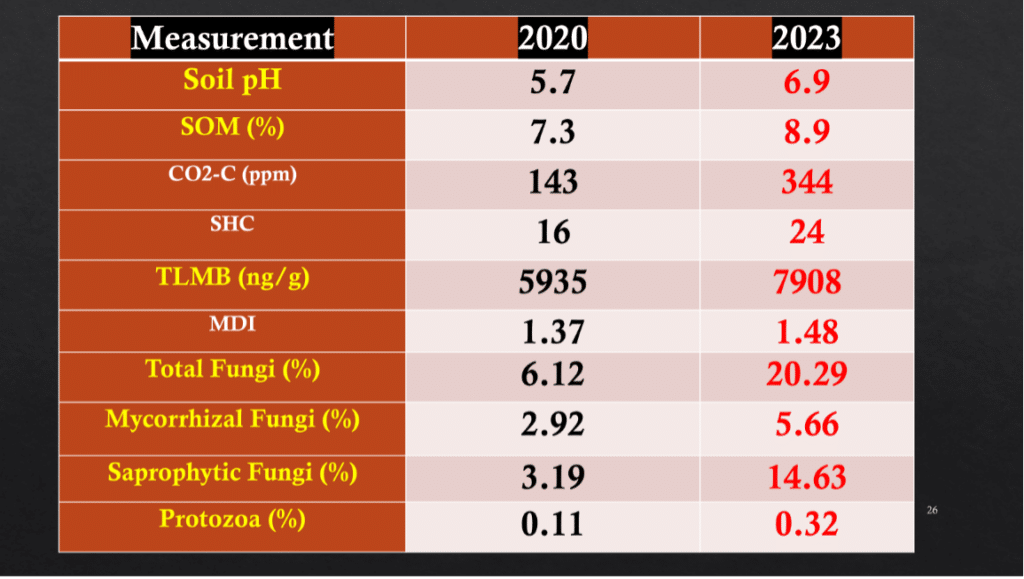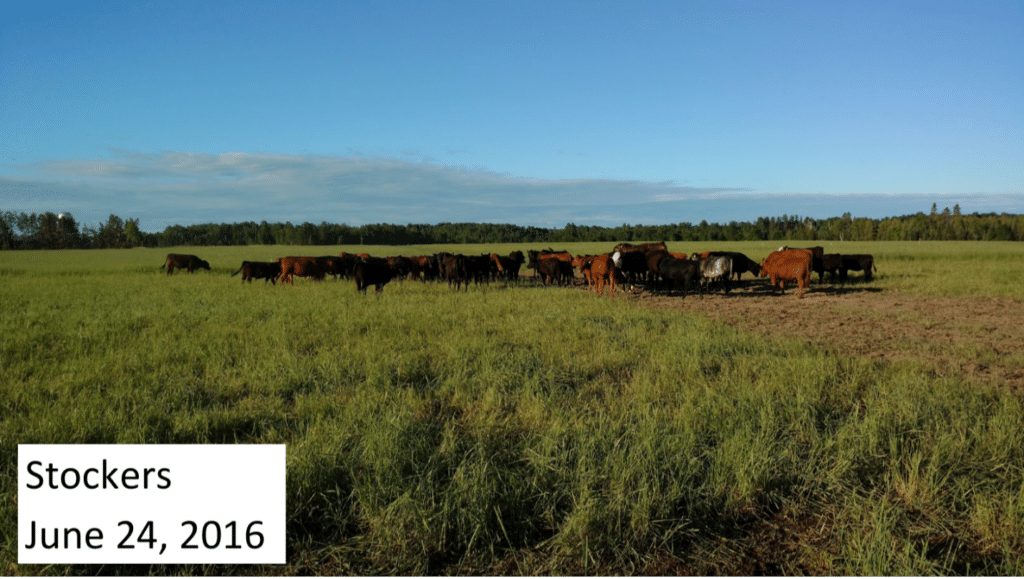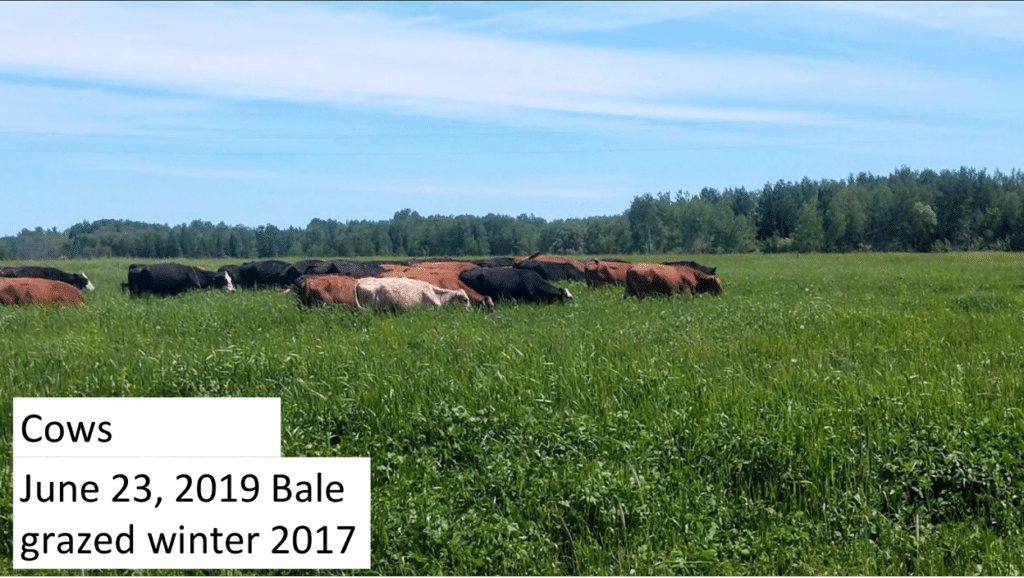By: Kyle Richardville, Understanding Ag, LLC
About the “Understanding” series
Agriculture isn’t rocket science. It’s much more complex than that. Farming and ranching involve the fields of biology, ecology, chemistry, botany, physics, geology, meteorology, politics, economics, psychology and mechanics, just to name a few. Companies make a fortune off many farmers and ranchers on such topics because it’s impossible to study everything and still have a life outside of work.
However, having a basic understanding of each of these topics has the potential to save a producer millions of dollars over his or her lifetime. This is why we are bringing you the “Understanding” series. The series’ purpose is to empower farmers and ranchers by helping them better understand the “why” behind regenerative practices so they can rely more on nature and less on expensive inputs.
Introduction
Someone wise once said, “We’re not managing problems in agriculture anymore. We’re managing solutions.” It’s true that many products and practices widely adopted over the past 100 years intended to solve a problem have created new problems, sometimes more challenging than the ones they were designed to conquer. In the field of medicine, these are called side effects. In agriculture, we call them unintended consequences, and throwing soil pH out of whack with well-intentioned products and practices is one of the more common unintended consequences Understanding Ag consultants observe across North America and beyond.
The final installment in this “Understanding pH” series will highlight various examples of farmers and ranchers who have changed their management system in such a way that they are reaping the reward of positive unintended consequences. (Who knew those existed?) These farmers and ranchers are saving serious time and money because, in their own words, “pH is something I just don’t worry about anymore.”
Cropland to Pastureland
As discussed in part 2 of this series, many conventional cropping practices acidify the soil unnaturally quickly. The reasons vary, but common culprits include excessive N fertilizer use and the loss of organic matter. What better way to eliminate the need for N fertilizer and build organic matter levels than to temporarily or permanently introduce pastureland and grazing animals back to cropland. This is exactly what Jay Fuhrer and the team at the Menoken Farm did starting in 2013.
The Menoken Farm is located near Bismark, North Dakota in the Great Plains region of the U.S. This once vast grassland ecosystem has been a hotbed for cropland conversion in the 21st century. In fact, from 2008-2016, croplands expanded at a rate of over one million acres per year, with the eastern half of the Dakotas leading the charge. Unfortunately, 69.5% of new cropland areas produced yields below the national average, with a mean yield deficit of 6.5%.1 With this in mind, Fuhrer and the team at Menoken decided to transition conventionally managed cropland back into grazing land. Cropland was seeded back to grass in 2014, and cattle were grazed during the 2015, 2016 and 2017 seasons. No amendments were applied during that time, just sound grazing principles. The results of the trial were impressive. As you can see below, pH in the eastern half of the trial rose from 5.8 to 6.8, while organic matter rose by 0.4%. The western half of the field’s pH rose from 5.8 to 6.2, while organic matter nearly doubled from 2.0% to 3.7%. Again, these results were achieved through managed grazing of cattle without the purchase and application of any fertilizer or pH amending products.

Many farmers do not have the resources or desire to permanently revert cropland back into grazing land. For them, a temporary break from cropping might be a good option. In the UK, it is common practice to introduce “leys” into the cropping rotation. This simply means turning cropland into temporary pastureland for roughly 2-5 years and back to cropping. British farmers have observed positive results that resemble those observed at the Menoken Farm, including pH balancing, organic matter accumulation, weed suppression and yield bumps in subsequent cash crops. Many farmers also note an increase in earthworm numbers, which is important because earthworm castings and their slimy mucus that coats the soil typically has a pH of 7 and is chock full of H+-competing cations like calcium (Ca2+) and potassium (K+).
Cover Crops
If putting ground into multiple years of pastureland is not a viable option, planting cover crops can be a great short-term practice for increasing overall soil health and improving soil pH naturally. Take David Brandt, often described as a godfather of the soil health movement. In 1971, the soils on his family farm in Ohio contained 0.75% organic matter and a pH as low as 4.2 in some spots. He applied two tons of lime per acre that year, but did not apply any more lime after that. By focusing heavily on implementing cover crops, no-till management and diversity of plant species, Brandt and his family completely transformed their central Ohio soils. In 2022, the farm averaged 8.7% organic matter and a pH of 6.9.2 Again, no lime was applied since that initial 1971 application. In contrast, neighboring farm ground he purchased in 2016 contained only 1% organic matter, showing that management makes all the difference.

On the flip side, Understanding Ag consultant Kent Solberg helped a North Dakota producer turn around high pH cropland soil. The farmer was trying to produce crops on a 30-acre alkaline area in a 150 acre field that he hadn’t grown a cash crop on in over 20 years, only kochia. Kent custom designed a full season complex cover crop mix and strip grazed it with stocker cattle in the late summer-early fall timeframe. They carefully selected cover crop species that were tolerant to high pH soils. The farmer planted the field to oats the following year. To his delight, the oats actually grew in the alkaline area. The farmer estimated a 160+ bu/acre potential yield for the field before the oats were unfortunately flattened by a hail storm. Regardless of the hail loss, the farmer was so excited that those 30 acres actually produced a crop.
Better Pastureland Management
While pastureland is typically easier to manage for soil pH than cropland, it is still susceptible to soil imbalances. Poor grazing management can easily throw off soil pH and hinder overall functioning of the soil ecosystem. Like cropland, excessive fertilization and disturbance of the soil can acidify the soil in a hurry. In this case, tillage is less of the disturbance in question, although some pastureland is regularly disturbed mechanically. Rather, overgrazing of the land is the main culprit. Pastureland that is overgrazed throws the system out of balance because root mass deteriorates on a large scale, organic matter is removed faster than it is replenished, the soil compacts and water cycles inefficiently, among other reasons.
Adaptively grazed pasture remediates pH because it allows living plants the opportunity to feed the soil for an extended period of time. Plant tissue, including roots and shoots, as well as the compounds they produce, are the origin of all organic matter in the soil. Organic matter is what feeds and houses the trillions of soil inhabitants that work tirelessly to balance the soil ecosystem. A steady pH relies upon a balanced soil ecosystem. In researching stories for this article, many examples abound of soil health improvements observed when a system is transitioned to a more adaptive, multi-paddock grazing system. The first success story comes from Otter Creek, New York, where Understanding Ag partner Allen Williams, Ph. D. helped one farm raise their pH from 5.7 in 2020 to 6.9 in 2023 by implementing adaptive grazing practices. No liming agent was utilized during that time. Many other incredible results were observed, which can be seen in Image 3 below.

Understanding Ag consultant Morgan Hartman recalls a similar story working with the Hudson Mohawk Resource Conservation and Development Council in New York. The field in question had been hayed and/or bush hogged the previous 20+ years without anything being put back on it. Initial soil tests indicated a soil pH of 5.8 and recommended two tons/acre of high magnesium lime, along with 80 pounds of P and K. Instead of applying these expensive band-aids, Morgan decided to use the power of bale grazing to permanently fix the issue. Bale grazing is the practice of feeding hay on pasture, which benefits the land by adding large quantities of organic matter directly to the soil.
He suggested managers take 20 tons of late first cutting hay and place it on the field in the last week of August 2009, immediately following a graze that left about 6″ of residual. Cattle were introduced December 6, 2009 and removed April 6, 2010. Soil tests were conducted in May 2010 and found that soil pH had risen to 6.4, recommended no lime, no N, no K and only 40 pounds of P. Morgan added that they didn’t graze that field again until July 4, 2010 and that it’s still one of the more productive little plots on that farm.
Another example of the power of bale grazing was personally experienced by Understanding Ag consultant Jeremy Sweeten on his own farm in the Upper Peninsula of Michigan. Jeremy and his family purchased the heavy red clay farm in 2015, and soil tests indicated a high-magnesium soil with pH hovering around 5.5. The only liming product available in his area was high-magnesium lime, which made finding, purchasing and applying low-magnesium lime cost prohibitive. Jeremy and his family had to seek out alternative solutions. As 20th century physicist Ernest Rutherford said, “We haven’t got the money, so we’ll have to think.” Instead, Jeremy improved his soils by managing the herd adaptively by utilizing paddocks, extending rest periods and feeding diverse hay bales. Soil pH became less of a hinderance to plant productivity especially once plant species diversity increased. The power of collaboration was on full display. Today, the county average for hay production in Jeremy’s neck of the woods is around 1.8 ton/acre/year. They now have pastures that triple that production. In addition, they also observe an increase in plant species diversity, soil organic matter levels and profitability.


Finally, if you thought this was purely an American phenomenon, you would be mistaken. English farmer Tom Burge, located in the southwestern county of Devon, has also utilized the power of adaptive grazing principles to eliminate the purchase of lime, fertilizer and chemical sprays on his pastureland. Many of his soils have pH around 5.5, similar to Jeremy’s, and range from dark-peat to deep-red clay. In addition, his farm receives more than 70-75 inches of rain annually, making outwintering livestock a real problem. Despite these challenges, Tom and his team have been bale grazing and rotating their Angus herd and sheep flock across the farm for the past five years. According to Tom, forage biomass has increased, soil pH is rising and he has increased his herd size, despite the warnings from others about the impending doom that would result from a reduction and elimination of lime and fertilizer.
What Now?
Good agricultural stewardship is about finding ways we can work within a given context to bring about more life, more balance and more positive relationships. There is a fine line between forcing our will on nature and giving an ecosystem a boost through human intervention. The exact location of this line is debated endlessly. Either way, soil pH getting off kilter unnaturally quickly is an ecosystem telling us we’re not managing it in a way that brings more life, more balance and more positive relationships. Nature is telling us something’s not right.
More times than not, the root cause is our desire (or industry demanding of farmers and ranchers) to produce more than the environment naturally would or should. We call that “Outproducing your environment,” and there are always negative compounding and cascading effects when an ecosystem is pushed past its limit. This is akin to the negative consequences that arise for a family, community or nation when money is slowly drawn out of a bank account quicker than it is replenished. There will eventually be a price to pay when money runs out, just as it is with the soil and the expensive amendments needed to amend pH while pursuing ever-increasing yields and maintaining overstocked pastures.
Conclusion
The emphasis placed on finding and curing root causes is a common theme running through regenerative agriculture and preventive healthcare. Soil pH is just one of many characteristics that farmers and ranchers battle whose root cause is likely self-inflicted. What if commercials for regenerative agriculture somehow made their way on TV? The narrator would end the ad saying something like, “Side effects may include building organic matter levels, growing soil aggregates, increasing soil microbial activity, more resilient plants, better water cycling, better nutrient cycling, soil pH mellowing…” Farm profitability and resilience in today’s world hinges on our ability to promote these positive compounding effects and to stop creating negative ones that require expensive inputs. Whether you experience money-saving positive compounding effects or expensive negative ones comes down to your management.
References
